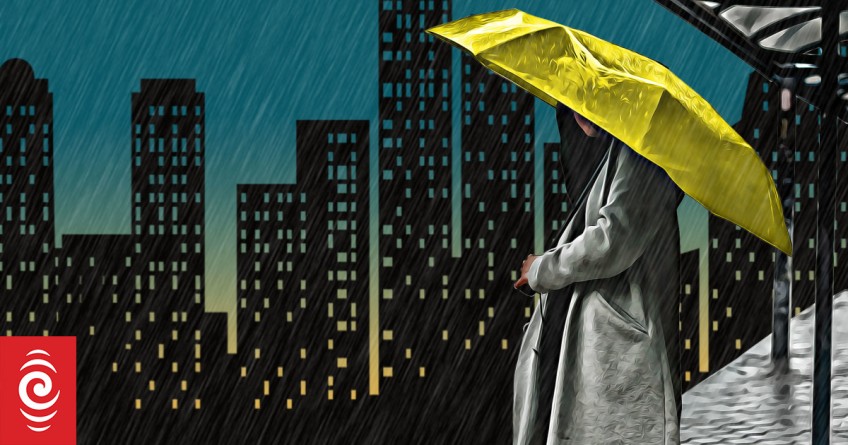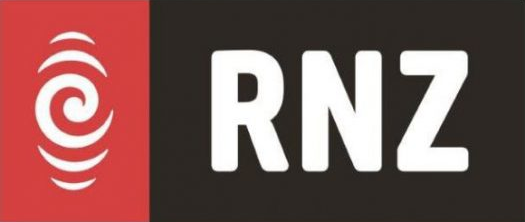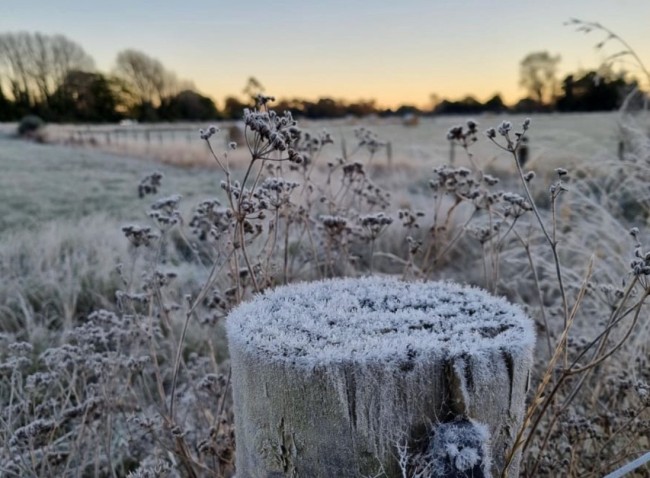
Bus user tracks punctuality as official data seems off
The punctuality data Auckland Transport published about my bus route seemed off. So I did some maths of my own.
If there's one thing I learned during the eight months of 2021 when Auckland wasn't locked down, it was to pee before I left work on rainy days.
Rain, it seemed, was kryptonite to Auckland's buses, frequently delaying the arrival of my central city bus home by an hour. When it was soggy, up to three scheduled buses in a row didn't show up.
The crowd at the bus stop grew, then subsided. Phone calls were made: "Again! I can't believe it. Can you pick me up?" Cars pulled up, Ubers arrived, people stormed off. A few like me remained, shifting weight from foot-to-foot and stewing in annoyance.
When a bus finally arrived, the driver copped abuse. "I've been waiting for an hour," yelled one passenger. Others, in a very Kiwi way of showing disgust, dispensed with the obligatory "thank you driver" as they alighted.
Not thanking a driver was never going to be how I channelled frustration. Instead, to deal with my simmering rage I became a data Karen and took notes about every bus journey.
Did it arrive early, at the scheduled time, or late - and by how many minutes? Was it raining?
I recorded each trip, basing its punctuality on the times written on the bus stop timetable.
Over eight months of commuting, late buses stole 11 hours and six minutes from me, an inauspicious total of 666 minutes - long enough to watch through Peter Jackson's longest Lord of the Rings movie three times over and get a third of the way through on a fourth watch. Early buses returned two hours and 34 minutes. The net result was eight hours and 32 minutes of my life lost to standing forlornly at a bus stop. This was time I will never get back.
Overall, 34 percent of my 177 buses arrived at the scheduled time. On rainy days this dropped to 14 percent.
While tracking buses may sound petty, the reliability of the bus service impacted employment options. If you regularly can't get home in time to pick your child up from after-school care because rain is kryptonite, can both partners work full-time?
And the results begged the question, how will Auckland's transport network get freed up and how do we reduce greenhouse gas emissions if public transport is unreliable to the point where taking a car was the better option?
Different numbers, different ways of counting
Auckland Transport (AT) reports on the performance of the bus system. At first glance, it looks like it's doing well. AT's published data for September 2022 put punctuality at 98 percent and reliability at 87 percent over the entire bus network.
During my data Karen months from January to August 2021, ATs score for punctuality and reliability of the two routes I used most frequently was 98 percent, a far cry from the 34 percent of on-time buses I recorded.
Why was my bus experience of only a third of my buses showing up at the expected time so different to AT's numbers?
It all comes down to what and how you count.
There are two measures AT reports on. Being punctual means the bus arrives no more than 59 seconds early and no later than 4 minutes 59 seconds late at the first stop on its route. The agency aims for 95 to 100 percent of trips to be punctual.
To be classified as reliable the window of time is wider. If a bus arrives within 5 minutes early and 10 minutes late at its first stop, it's reliable. The goal is for 98 to 100 percent of trips to be reliable.
As well as allowing a wider window of being considered on time, AT's method of counting punctuality and reliability differed to mine in three key ways.
Firstly, those three buses in a row which don't show up on rainy days on my route don't even make it into punctuality statistics. They're only recorded in reliability numbers.
Secondly, I travel during rush hours. Middle of the day buses which ran on roads free of work commuters were included in AT's calculations.
Finally, AT only counts punctuality and reliability at the first stop of a route. If you get on a bus a third of the way along a route, and the bus is delayed, that doesn't impact the performance statistics.
ATs way of counting leads to impressive sounding rates, but rates which don't apply to the way many people use buses - to commute during rush hours.
AT metro optimisation manager Richard Harrison acknowledges the problem with only measuring at the first stop of a route.
Performance measures are more a measure of a bus company's performance and are used to calculate bonuses and abatements the companies are paid, he says. They're not a measure for commuters to gauge whether a bus service was likely to get them to where they need to be on time. They're looking into information that would be more meaningful to commuters.
"Punctuality at last stop is much easier to understand and it does go nicely with 'we got you to your destination': which is you got to work on time, you got to your date on time, you got to the shops before they close."
Clawing back stolen time
So, what can be done to claw back the time lost to waiting for late or cancelled buses?
In the midst of a bus driver shortage causing around 1000 cancelled buses a day an obvious answer is to recruit more drivers. But are there other ways to improve our bus systems?
Speeding up the time it takes to drive a route can deliver a triple whammy of benefits. Fewer drivers would be needed, the number of cancellations would reduce and the number of passengers prepared to give up cars for quicker buses would increase.
University of Auckland transport and infrastructure expert Tim Welch points to the Northern Busway as an example of bus lane nirvana, and what Aucklanders could hope for.
"This is a case where we built the infrastructure specifically for buses so they don't have to compete with traffic or get stuck in traffic lights or whatever other issues might come up."
AT estimates the average speed of the NX1 bus during morning and evening rush hours is more than 40 kilometres per hour. The average speeds on my routes are closer to 20kmh and inner city buses can crawl at between eight to 20kmh during peak hours.
There's no reason why speedy trips should be the domain of just northern commuters making the trip alongside a motorway.
"Across the globe, where city buses have been given space, away from cars, they're very successful," says Welch.
Adding bus lanes can come with a backlash. The space needs to come from somewhere and can mean sacrificing car parks. Welch says business owners' fear of lost car parks impacting sales isn't backed by evidence.
"The studies show that the vast majority of people that are patrons of local shops are arriving either by foot or by bike, or a healthy portion by public transport. Cars really aren't the main source of that business. In fact they're less than 6 percent."
He suspects "windshield bias" may be to blame, where business owners who drive assume customers drive too.
"I think another factor is just the visibility. You can see cars arrive at a shop, you don't necessarily know how everybody else arrived so it's easy to attribute the cars being the number one mode of choice for your customers, even though it usually isn't."
Bus lanes form part of Harrison's dreams for a better network, but he warns more lanes aren't necessarily the answer.
"My wish list would be to join up bus lanes, we've got lots of bus lanes, it's the linkages between them. Sometimes it's hurry up and get to the next jam."
Any implementation of bus lanes goes through a consultation process which can be fraught. "I've got 1.7 million bosses, and they can't always agree on what they want," says Harrison, but the loudest voices come from two groups.
"Businesses and people parking, yep, they're the major objectors."
Hanging over Harrison's wish list is a letter Mayor Wayne Brown sent to AT.
"You will have seen the letter of expectation, he wants us to consider how we can allocate space to all users across the roads. That'll be the next challenge, how we find space to do that."
An earlier Brown letter, sent in October appeared to put cars in front of bus users. AT was told to stop changing how people live.
"Aucklanders do not always have the choice of using an e-bike, a bus or even a train but rely on the roading and car parking networks to make their life functional," he wrote, also telling the agency to cease any sales of council-owned car parking buildings.
He told AT to listen more to local communities.
"Unless there are overwhelming reasons otherwise, you should reflect the priorities of local communities in your approach to such projects and decisions."
Scott Caldwell, a spokesperson for Coalition For More Homes, speaks on city transport. When consultations on new bus lanes roll around, bus users tend not to submit, he says.
"So you get this illusion that the cost of these actions outweighs the benefit. But usually, this is not, in fact, the case."
He would like to see the consultation approach change.
"What would be better is if we had more of a bias to action and then when we've made a low consequence change ask people whether it's been positive or negative for them."
Mayor Brown may appear to be lukewarm about losing carparks but he does have one hot topic for buses: Bus priority at traffic lights.
"I campaigned on a promise to fix Auckland traffic, transponders on buses were one of my simple solutions and I am pleased to see us make a start," he said in a March press release.
Transponders on the bus trigger traffic lights, letting buses go first. The press release said trials showed the wait times at lights reduced by between 10 and 35 percent. It's been introduced on Manukau Road and Pah Road and will be implemented on Dominion Road and along the Eastern Busway in coming months.
Bus priority leaves Welch lukewarm. "It's been tried in different locations with mixed success," he says.
"The problem is the bus also has to pull out of traffic to offload and unload new passengers and then try to get back out into traffic so you lose a lot of those advantages along the bus route."
Bus priority might be useful as part of a bigger suite of measures, but on its own, it's unlikely to be a silver bullet.
Reducing the number of stops on a route is another way to speed up trips. This reduces the time spent waiting for passengers to get on and off buses, as well as the time the bus spends getting in and out of traffic.
Caldwell points out that overseas 400 metres between stops is often cited as the optimal distance between stops on a route. On Auckland's routes, there are about 3000 stops within 400m of each other. Roughly 300 stops are within 200m of each other.
"Historically, Auckland's bus network has not been considered a main mode of transport, it's been more of a welfare thing." Because so few people used it, Caldwell says stops were put everywhere. Now buses are used more, "our network is really biting us in the ass, if you like".
But Welch is tepid on this idea too. As a rule of thumb, he says 10 minutes walking is the optimal time to and from a bus stop.
"It's important to have a lot of stops, because you do have people that are heavy users of public transportation that don't have the mobility necessary to span longer distances from bus stops."
AT has published its own guidelines on the topic, recommending urban areas outside of the CBD have bus stops between 400m and 3km apart. For the CBD, it recommends 150m to 400m spacing. It says to consider the landscape and population in decisions. A hilly area, or an area where many elderly people live may require closer stops.
Harrison says any stops which are ridiculously close to each other for no good reason have been removed.
Congestion charging is another topic which is raised as a way to reduce cars on the road and free up the flow of buses. Auckland's North Shore ward councillor Chris Darby says he's hopeful legislation before parliament will mean councils can implement it.
Harrison is not a proponent.
"There's other ways to get what we need," he says. "We could have congestion charging, but we could have bus lanes that would still give us our outcomes."
Darby also stresses the importance of bus lanes. "It might require reallocation of road space, with some car parks being removed in favour of buses carrying 50 to 100 people traversing that corridor rather than maybe 10 cars parked on that corridor."
Welch too, comes back to bus lanes as the best way to improve reliability.
"If we were looking at something that was close to a good solution in a single move, then, you know, the bus lanes is certainly the first on my list."
For my problem of rainy day traffic chaos, Welch suggests drivers have a part to play.
"As soon as it starts raining, you can watch the traffic news and the crashes begin to pile up pretty rapidly."
Adding more buses to the network on rainy days probably wouldn't help me claw back the 11 hours and six minutes I lost in 2021. Again, he points to bus lanes as the closest thing to a solution.
"It seems pretty clear to get around a lot of these issues, it's just giving them [buses] the space they need."
Main image: RNZ/Composite image

























